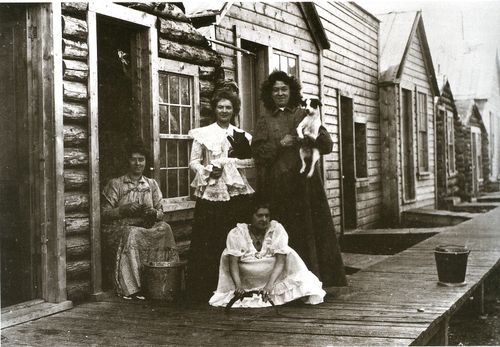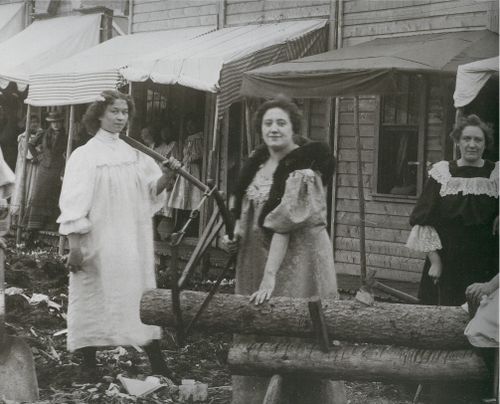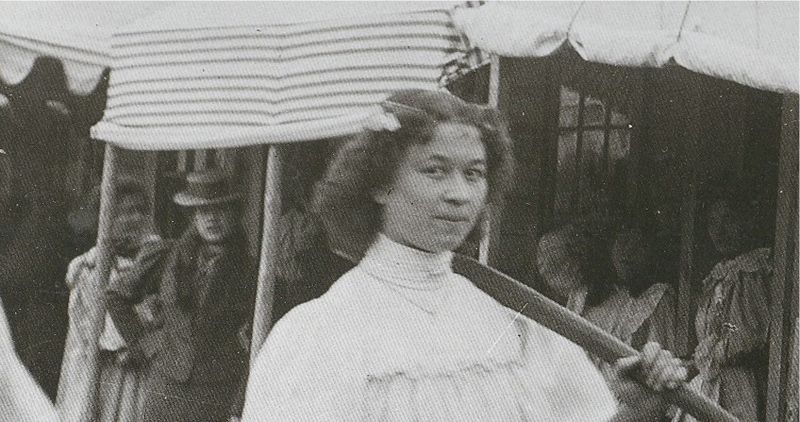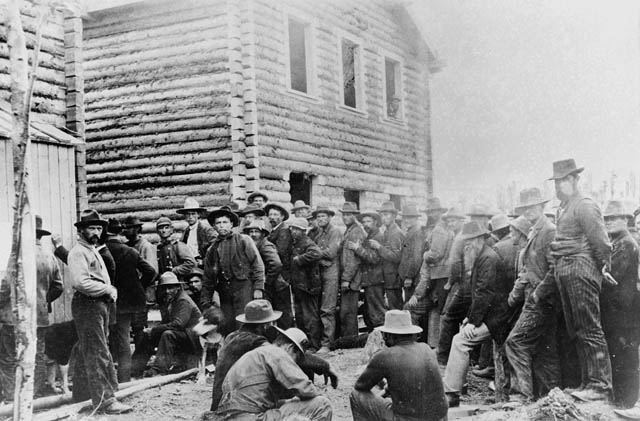JF Ptak Science Books LLC Post 714 Blog Bookstore
The Klondike Gold Rush, or the great Alaskan Gold Rush, took place at the very tail end of the 19th century (starting 1896/7) along the Klondike River near Dawson, Alaska. It was a wild, woolly (literally) time, with communities of thousands springing up in just a few days--Klondike itself grew almost immediately to 40,000, stretching all human services, food being the scarcest commodity.
One service to humans that was ably met was sexual, filled by legions of prostitutes, some of whom arrived in the Klondike of their own free will, and others, not. This photo, made near Dawson, shows "Paradise Alley" (behind front street) an almost-overnight series of rough-hewn log bungalows sweatily constructed for lonely needs. There were evidently 70 of these little huts, all in a row, each with the woman's name above the door, presumably rendered in chalk. (It seems that the photos I've seen of women in the Klondike show many smiles, but no toothy ones.)
This is a detail from a photo seen in Pierre Berton's The Klondike Quest (a big, beautiful book of high rank for a popular history, interestingly published with a more shouty title in America as Klondike Fever) showing the working women of Dawson working at other trades. I particularly like the picture of the high-collared white-dressed angel-woman witht he axe on her shoulder...and the woman behind her, under the make-shift cloth awning, her hat tiled forward and her hand jauntily on her relaxed hip.
Prostitution wasn't legal, nor was gambling or the encyclopedia of con games that evolved here--but all certainly flourished, with many fortunes made outside the gold fields. Mr. Pantanges started his movie house empire here, and Donald Duck's Uncle Scrooge started his pile of money bags, as did many other people. But the 12.5 million ounces of gold wasn't exxactly distributed with equality to the dozens of thousnds, and probably hundreds of thousnads of people who came to the Klondike looking for their fortunes. I'm certain that in this vast game of winners and losers, there was moreof the later and less of the former.
This image of miners waiting to register their claims gives us a pretty decent idea of the clientelle available to these women. Oy. Seems to me an impossible way to live--for the women, that is.








Comments